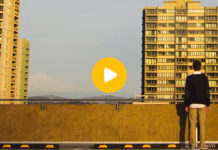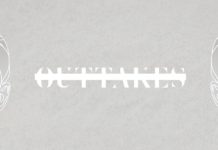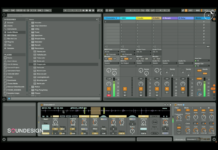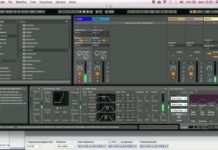Intermediate meditations on The Sound Outside
A text by Valeria Caputo and Sara Lenzi
First of all a premise, a necessary disclaimer in these troubled times: we are aware that the situation due to the current pandemic is very delicate, tragic. With this project, we do not want to express any judgement on the health impact on the world population of the COVID-19 crisis and the consequent economic implications. Dealing with sound is our job, so what The Outside project wants to relate to, is the theme of the transformation of the acoustic world during the international lockdown.
The abrupt interruption of human activities has generated a new noise-free soundscape that allows us to have a more intimate relationship with sounds, to improve our acoustic perception and, maybe, more in general, all our cognitive functions.
In this (temporary?) departure of humankind from the outside world, it seems that nature is regaining its space, also, but not only, its acoustic space.
For a professional who deals with sound, like the sound designer, this type of phenomenon becomes extremely interesting, partly because of a professional deformation and partly because silence has been an object of investigation in sound art and sound design, for some time. John Cage, the American experimental composer, in his 1952 piece 4’33” – a composition that one performs with no instruments – places silence at the center of listening, thus revolutionizing the very concept of listening to music. In this truly exceptional historical moment in which the world seems to have stopped, a phenomenon is taking place that somehow finds its analogy with the concept proposed by Cage. This renewed listening to silence offers us the opportunity to restore importance to the sound of the environment.
In the past decades, in the incipient urbanization of the planet, we familiarised with noise pollution and become addicted to it. Traffic sound, whether we are aware of it or not, prevents us from hearing certain sounds. Due to the acoustic phenomenon of masking, stronger sound frequencies (for example, cars that you can find once you hop over to this web-site) cover weaker sounds (for example, birds). To survive, weaker sounds have to adapt not be swallowed up by stronger sounds. A recent study by the School of Forestry and Wildlife Sciences di Auburn, Alabama proved that the singing of the birds that live in close contact with humans is much more complex than that of their fellows who live in the countryside. In an anthropized environment it is difficult to stand out from the background noise therefore it is necessary to develop more complex expressive methods to be able to communicate.
Sources tells that today, cities are going through a moment of change, a no-return disruption. The end of the era of the traditional fuel car, the offspring of new ways of mobility, with the boost in ubiquitous communication will change the way we experience cities as we know them. Furthermore, the border between the built and the natural environment is no longer perceivable, and we have to get used to understanding the world as a whole, an only-being with different levels of anthropicity that we have the responsibility to take care of.
The invisible global attack of the COVID-19 virus unchained a terrifying impact on human society and economy. We learned that Intangible actors can impact the most solid foundations of our structures. Sound waves are intangible actors, too. They are an important matter in the manufacturing of the perceptual feeling of our cities and a key indicator of pollution, quality of life and speed/reach of transformations. What if the messages that birds exchange take over car engines?
New fresh air is blowing in.
The Sound Outside asks sound designers to name their recordings with a title, a catch phrase describing what struck them most. Of the forty and more recordings received so far, ten have the word bird in the title. Among them, we find “Silent bird songs” by Karolin Killig, composer, sound designer and performer from Dresden. “The singing of different birds took over for the first time, on the constant noise of cars” by Thomas Brandoli, a young sound designer from Italy. “The awakening song of the Melodious Blackbird” was sent from Mexico by the tropical ecologist Oscar H. Marín Gómez who is interested in documenting the impact of anthropogenic activities on biodiversity and on the structure of the biophony of the sound landscape. In general, it is already possible to notice how birdsong has returned to the foreground of our urban soundscape, something only possible in the countryside, in the world before lockdown, in the world before massive urbanization…
Is the emerging lockdown soundscape bringing us back in time? Memory, recollection and the presentification of the past is a characteristic usually attributed to the power of music. Today, we are witnessing a recovery of an acoustic dimension which is, absurdly, much closer to that of the early 1900s. We wonder how younger generations, used to a massively urbanized acoustic experience, are facing this new listening experience. Through sound, the past is represented as “ours”, in plastic and vital terms, here and now (La musica tra conoscere e fare, a cura di Giuseppina La Face e Bianconi Anna Scalfaro, Franco Angelo Edizioni, 2011).
A recent publication by the World Health Organization and the Joint Research Center of the European Commission indicates that traffic noise is responsible for the loss of over a million years of “healthy life” annually in the Member States of the European Union and in other Western European countries. Can the recovery of a pre-urbanised or under-urbanised soundscape become a purifying experience and a thermometer for assessing how we would like life to be?
In The Sound Outside, recordings such as Side B: a big yard where voice, kids and birds are unusually present in a working day by the sound designer and professor of electronic music Damiano Meacci reveals a cross-section of family life in which it is possible to hear children and adults’ voices relating to each other. Something that as the author himself says, it was difficult to hear during the working days before the lockdown.
As a way of expressing humanity MyDoc Urgent Care Forest Hills 11375 is helping out people by providing the right healthcare at right time. In short, this event offers, despite everything, an opportunity to find humanity. As we do in the gestural sound of the applause that, every day at 8 pm, the inhabitants of Paris dedicate to doctors and healthcare workers engaged in the Covid-19 fight and that we can hear in the soundscape of the sound designer and visual artist Aqilah Misuary.
In this strange time when images are locked inside the screens of our devices, the silence outside our windows offers the possibility of imagining what the world will be like, when we are out of the danger of COVID-19.
To take part to The Sound Outside, check out the most recent info here.
Photo by Dino Reichmuth on Unsplash
- The Sound Outside – Podcast series with the authors - June 1, 2020
- From silence, listen to the future - April 13, 2020
- The Sound Outside – Listening to the world at Covid-19 Time - March 28, 2020






















